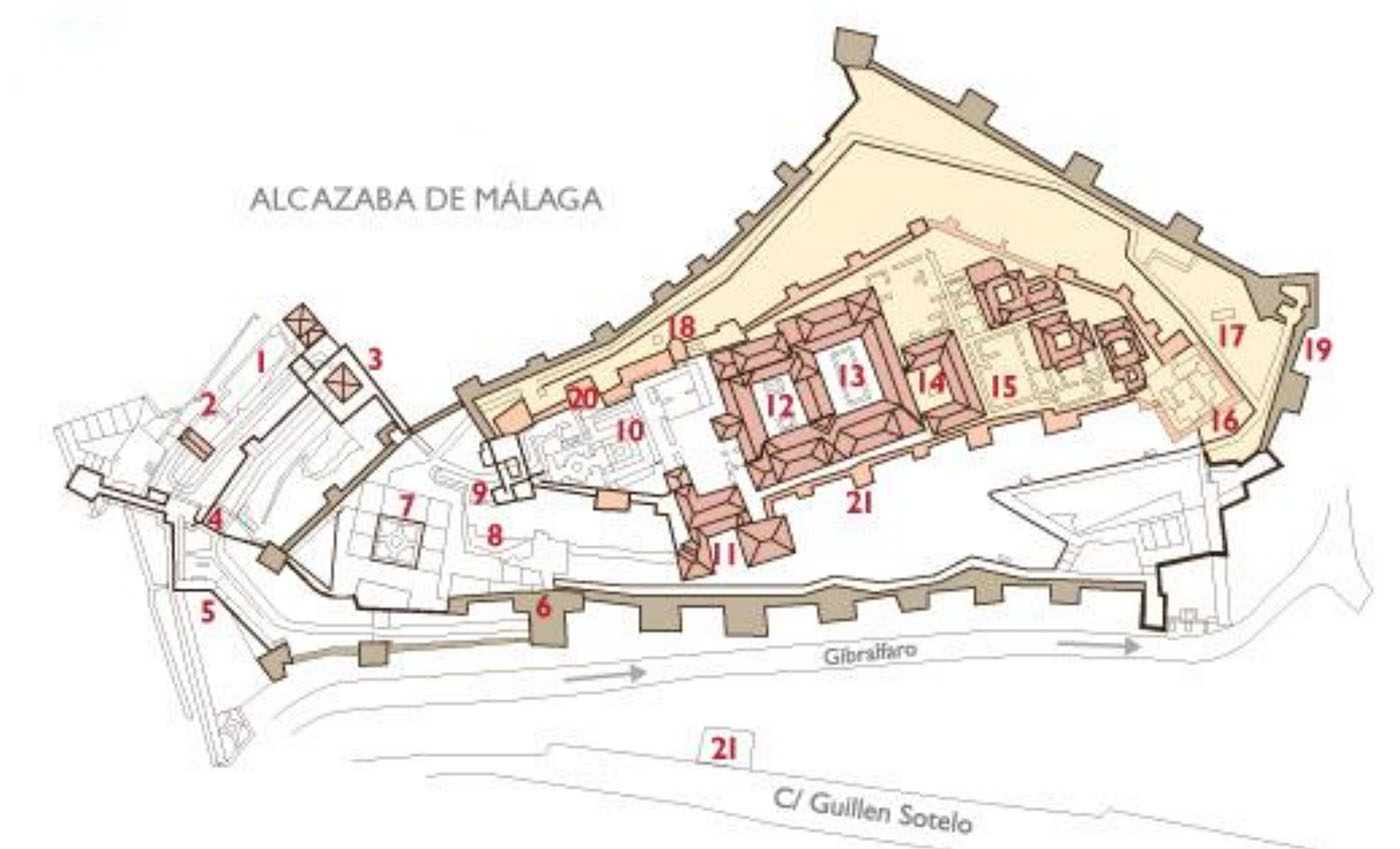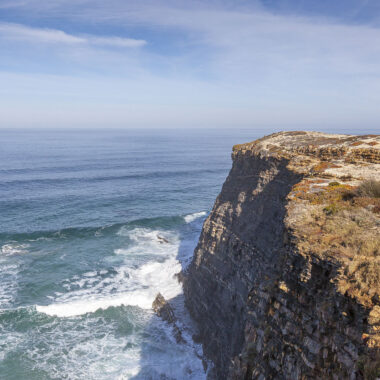Costa del Sol – the Coast of the Sun – stretches across Spain’s southern Andalusia province from Nerja in the east to La Línea de la Concepción near Gibraltar in the west, a span of roughly 150 kilometers/95 miles. The region typically receives a staggering 325 days of sunshine per year, and the sun is exactly what we were chasing as we tried to squeeze every last day of beach time possible into our journey across Europe. A lot of travel sites and guides call Costa del Sol uninteresting and soulless due to the seemingly endless high rise hotels and apartment buildings that stretch along the bulk of its shore. We managed, however, to seek out the quaint fishing village of Nerja for our stay, a charming collection of whitewashed abodes perched on the cliffs above Playa de Burriana with the turquoise waters of the Mediterranean stretching out below. It was very touristy, with cheap flights to the nearby city of Málaga bringing tourists from all over Europe, particularly the UK. Without a doubt, we heard more British than Spanish accents on the beaches and promenades ofCosta del Sol.
As we visited in low season, we had an excellent array of accommodation from which to choose, settling at a spacious apartment a few minutes walk fromPlaya de Burriana. It was tucked into a small complex of mostly empty holiday rentals that shared a pool, which the kids loved. Lisa commented that her favorite days on vacation are those when the only clothing worn are pajamas and bathing suits; we managed just that on one of our days on Costa del Sol, starting the day at Playa de Maro a short drive east of Nerja, home for a quick sandwich lunch, followed by the afternoon on Playa de Burriana with paella for dinner on the beach. Idyllic. The snorkeling atPlaya de Maro was fantastic, so good the kids made Mum and Dad a little nervous at one point when they swam together out of sight around a distant point with their masks on. As the main beach in Nerja, Playa de Burriana was decidedly busier than tranquilPlaya de Maro, the beachside promenade jammed with seafood chiringuitos and bars that seemed to be hopping at all hours of the day. Our Air BNB host suggested we needed to visit the Ayo chiringuito at the eastern end of the beach as it had been making paella next to the sand for over 50 years. The paella was absolutely delicious, jammed with all kinds of seafood and chicken. And it was fun to watch the cooks prepare the dish in huge pans over an open fire next to the beach. Eating in bathing suits on our way home from the beach, doesn’t get much better than that!
Nerja’s old town around Plaza Balcón de Europa was a nice spot to spend an afternoon, a lot more touristy that the whitewashed section of Nerja where we stayed but quaint nonetheless. The old town was flanked by a beach to the east and west – Playa de la Calahonda and Playa el Salón respectively – where we enjoyed a couple of hours swimming and pinging the Aerobie back and forth before the weather cooled off.









We’d originally planned to stay in Málaga during our time on the Andalusian coast, but when we discovered the city is home to almost 600K people we started hunting for a little less hustle and bustle. That said, a trip toMálaga was still well worth the time spent, in particular to visit the centuries-old Alcazaba and Castillo de Gibralfaro on the edge of the city’s old town. The Alcazaba was built by the Hammudid dynasty more than 1000 years ago and is one of the few places in the world where one can view intermingled Moorish and Roman architecture. The mix of Roman-styled marble columns with bricks and stonework were quite evident in multiple sections of the palace. The Roman theater adjacent to the Alcazaba – first photo below – was constructed in the first century BC, so much history… The Alcazaba was not as visually stunning or as well-tended as the The Royal Alcázar of Seville – hence it didn’t have a UNESCO World Heritage stamp – but I think the kids enjoyed the Alcazaba more than the Alcázar given both citadels and all of the palace’s ramparts were completely open to explore. One could climb up the narrow stairs onto the Alcazaba’s walls and into the archery turrets to gaze on the city below, through all the tunnels and Moorish-styled archways into every nook and cranny of the palace. Some of the ramparts had me holding on for dear life, as the barriers were only knee-high on me and the drop on the other side exceeded 50 feet. No way one would be able to explore a relic like the Alcazaba unhindered in a more litigious country like the US. The Alcazaba was generally considered impregnable and was used as a blueprint for military architecture during the Taifa period, it was so well fortified that we actually had trouble finding our way out of the palace when we were done!

Castillo de Gibralfaro was perched on top of a steep hill above the Alcazaba and well worth the hike. The views of the Alcazaba and city ofMálaga from on top its ramparts were stunning. The site on top of Mount Gibralfaro has housed military fortifications since 770 BC, with Castillo de Gibralfaro in its current state being used as a military site until 1925. The castle is famous for a three month siege in 1487 by Catholic monarchs, the battle ending when hunger forced the Arabs to surrender.











Adjacent to Castillo de Gibralfaro and the Alcazaba was Málaga’s old town, its beautiful architecture and pedestrian-only tiled streets were a delight to absorb after our tour of the palace and castle. The promenades and central Plaza de la Constitución were pretty jam packed during our visit, I can only imagine what it’s like during the summer months when tourist season is in full swing. Our quick lunch of empanadas at Panditas just off the central plaza was a highlight, we all went back for seconds of the stewed pork pockets after our first round. Delicious!
The bulk of the coastline to the south ofMálaga was gaudy tourism on steroids: high rise hotels and apartment buildings lined almost every inch of the coastline all the way to the sand, with cheap bars and chiringuitos offering 2€ pints everywhere we looked. There was even an aquarium and theme park for jet setters visiting the area with kids. It had Lisa and me thinking of a cross between Queensland’s Gold Coast and Tijuana. That said, civilization couldn’t detract from the ocean and we all had a great swim at Playa de Santa Ana in Benalmádena one afternoon. In spite of the development of the coast to the south ofMálaga, there were sections of the coastline that remained untouched except for the seafood chiringuitos that were dotted every few hundred meters on the sand. The beachside restaurants all offered generally the same fare: local seafood cooked on stakes over open coals. Unfortunately during the autumn and winter months most of them only open for lunch and we were too late in the day to sample their fare, but from what I’ve read they’re worth a stop. Next time…





















































































Pingback: The Alentejo and Vicentina Coasts - Our Walkabout Two
Pingback: Lisbon - Our Walkabout Two